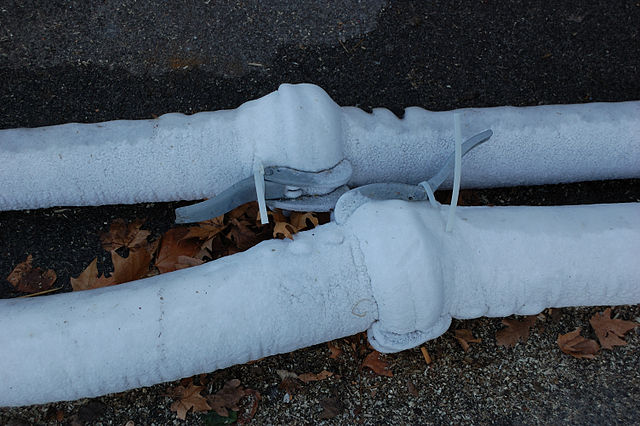Nov 30, 2023
Prevention and Thawing of Frozen Pipes in Japan
Many people arrive in Japan from places where it simply does not get cold and are unaware that they need to worry about things like frozen pipes. In most places in Japan, the temperature does not fall below freezing that often, and as a result, the pipes have not been insulated as well as they could be. Often, the water pipes are located outside the house to allow easy access, compounding the problem.
Outdoor pipes located on the north side of the building will remain cold during the day. Piping that faces south, west or east may defrost during the day on their own but are still susceptible to freezing overnight or during a cold spell. The best answer to this problem is to pay attention to the weather and take preventative steps to avoid freezing.
Preventing Frozen Pipes
Your best bet is to prepare in advance, and take specific steps when you notice the temperature will fall below 0ºC/ 32ºF:
In Advance:
- Drain any unused water supply or water heaters. If water remains in an unused water supply or water heater, the water inside will freeze and expand, causing rupture and damage. Make sure to open and close the drain plug handle completely. Half-way operations can cause water leakage and high water charges. If you do not know the location of the drain plug or the operation of it, contact the manager or owner.
- Insulate water pipes. Insulate water pipes that are exposed to the cold by covering them with a heat-insulating material (such as a piece of cloth or polystyrene foam) and wrap a vinyl tape over that to prevent it from getting wet.
When you Notice Temperature Fall
- Let the cold water drip from the faucet served by exposed pipes. Running water through the pipe – even at a trickle – helps prevent pipes from freezing because the temperature of the water running through it is above freezing. Please note, a trickle, as in a small stream, not dripping. The idea is to keep the water moving.
- Leave the heat on in your home, set to a temperature no lower than 12 ºC/ 55ºF and keep airflow over the pipes (by opening cupboard doors, etc).
If you do find yourself with frozen pipes, you may be able to thaw them yourself.
Thawing Frozen Pipes
Do not force turn the frozen faucet. Inside the faucet, there are small parts and delicate items that may break if you force it when frozen, be gentle!
Thawing frozen pipes can be dangerous if done incorrectly. An open flame should be used ONLY by a qualified professional. If you are unable to thaw your pipes any other way, you should call a professional. Besides the fire hazard, you could over-heat the pipe and cause a steam explosion.
Here are the steps you can take, safely, if you wake up some frigid winter morning to find a pipe has frozen.
- Open faucet so steam produced by your thawing activities will be able to escape.
- Start thawing pipe at the faucet, and work back towards the other end of the frozen section. As you melt the ice, water and steam will come out of the open faucet. If you started in the middle, steam produced by melting ice could get trapped and build up enough pressure to burst the pipe. If the pipes are frozen solid, the order is a must. If your pipes are outside and were working yesterday (lightly frozen), you may want to reverse this order and start outside.
Pipe-thawing options: Here are a couple of safe ways to thaw your home’s pipes.
- The most popular and safest pipe-thawing option is to use warm water. Wrap and secure a heavy towel around the pipe to concentrate and keep the heat against it. Using a bucket to catch runoff water pour hot or boiling water over the towel. Repeat as required.
- If you want to avoid the messiness of thawing with hot water you can try a heat lamp or hairdryer as a heat source. These work much less quickly. NEVER use an open flame to melt a frozen pipe because it is extremely dangerous.
Photo by Cha già José (Frozen PipesUploaded by darkweasel94) [CC BY-SA 2.0], via Wikimedia Commons


About the author